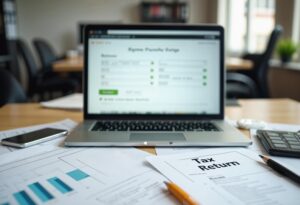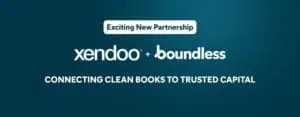When a small business makes sales on credit, there’s a chance of having bad debt expenses. Most businesses use the bad debt expense formula to account for them.
Even the customers with the highest credit record can go bankrupt and fail to pay their debts. Tracking and recording these debts gives you an accurate picture of your financial standing.
In this post, we will dig deeper into how to calculate bad debt expenses and what they mean for your business.
What Is a Bad Debt Expense?
When a company sells goods or services on credit, the risk of customers failing to pay the amount owed is always there. The longer they take to clear the payment, the higher the chances of not paying at all.
Bad debt expenses are the part of accounts receivable that a company considers non-collectible. In other words, you were unable to collect payment for your product or service. Accounts receivable (AR) refers to the funds due to a company for products or services. It is the amount of money that customers owe you.
After multiple unsuccessful collection attempts, businesses record bad debt expenses in the general ledger as a negative transaction. They are part of the operational costs under the income statement.
When Do Bad Debt Expenses Happen?
Bad debt expenses occur when a customer cannot pay outstanding bills for goods or services purchased on credit. Customers can fail to pay their bills due to financial difficulties or a disagreement over the delivered products or services. For instance, a customer may dislike how a printing order turns out and refuse to pay.
If they make no effort to negotiate the payment terms for an extended period, you might consider writing their invoices as bad debts. Writing off these debts helps you avoid overstating assets or revenue while giving you an accurate picture of your company’s financial position.
What Is the Bad Debt Expense Formula?
Accounting for your debts is good business practice. The bad debt expense formula accounts for the total bad debts from past sales. There are two ways to do this:
- Direct or write-off method
- Allowance method
Let us look at each technique in detail.
Direct or Write-off Method
When many of your clients pay off their bills, and you have fewer bad debts remaining, you might opt to write them off one at a time.
This mostly happens when the invoice surpasses the deadline, and it becomes clear that the customers won’t pay. The IRS states that you should only write off bad debts after you have made all possible attempts to recover the amount without success.
So, if you cannot contact the buyer or develop a repayment plan with them after numerous attempts, it might be time to write off the bad debts. In such a case, you will make a simple transaction record in your ledger account where the bad debt expense equals the account receivable value. The write-off method has no formula since actual values are recorded as expenses in your book of accounts.
The write-off method may seem like an easier way to deal with doubtful debts than the allowance method. For one, you only have to record two transactions. Another upside is that it reduces the tax burden because you can write off the bad debt expenses from your taxable income. It also gives an exact amount of bad debts rather than an estimate.
However, there are downsides to using the direct write-off method. It fails to uphold the Generally Accepted Accounting Principle (GAAP) which states that businesses must recognize expenses during their incurred period. With this method, you might not recognize bad debt expenses until the next accounting period. Theoretically, this is not the correct way of identifying bad expenses. Another downside is that, since you record it as a credit to accounts receivable, it can cause balance sheet inaccuracies.
Allowance Method
With the allowance method, you account for bad debts ahead of time. If you do a lot of product or service deliveries on credit, you’ll want to use the allowance method.
Also known as allowance for bad debts, this method sets aside a percentage of overall credit sales for bad debts.
Using your historic or past data on bad expenses, you predict the percent of future bad expenses from all credit sales. The allowance is always an estimate because you are trying to predict the future based on the past. However, it can help you plan ahead for bad debt expenses and budget appropriately.
You can use the bad debt expense formula to estimate the amount that you need to set aside.
- Percentage of bad debt = total bad debts/total credit sales
For example, assume your business has been operating for several years and the overall credit sales in the last accounting year were $500,000. Out of the total credit sales, $50,000 ended up being non-collectible.
You’ll want to account for these bad debts prior to the next accounting year by setting up an allowance. Here is how to do it.
- Percentage of bad debt = $50,000 (total bad debt expenses) / $500,000 (total credit sales)
That gives you a bad debt allowance of 10%.
If this estimate is practical for future unpaid invoices, create an allowance for doubtful accounts at 10% of this year’s anticipated credit sales.
If your business is relatively new, the allowance method may not be accurate or reliable. It also will not work if you have a massive non-recoverable debt that is considered an outlier. The large amount can skew your bad debt allowance.
How to Record Bad Debt Expenses
Keeping a record of bad debts helps maintain balanced statements while allowing you to make better financial decisions. Nonetheless, you can only record bad debts if you use accrual-based accounting. Those using cash accounting principles cannot do this since they have no recorded bad debt to undo or balance.
Recording bad debts using the direct write-off method involves debiting the expense account and crediting the accounts receivable with the exact value.
For the allowance method, you should record your estimated bad debts as a contra asset account. If you are wondering, a contra asset account has a negative or zero balance. This method involves debiting your expense account and crediting the doubtful debts allowance with the same value here.
Bad debt expenses can bring significant losses to a business, especially those with a large portion of credit sales. However, tracking them paints a clear picture of your cash flow and financial position.
If you need any help streamlining your accounting, xendoo can help. We have accounting software and a team of bookkeepers to prepare your financial statements every month. Contact us now for a consultation or begin your free trial.










